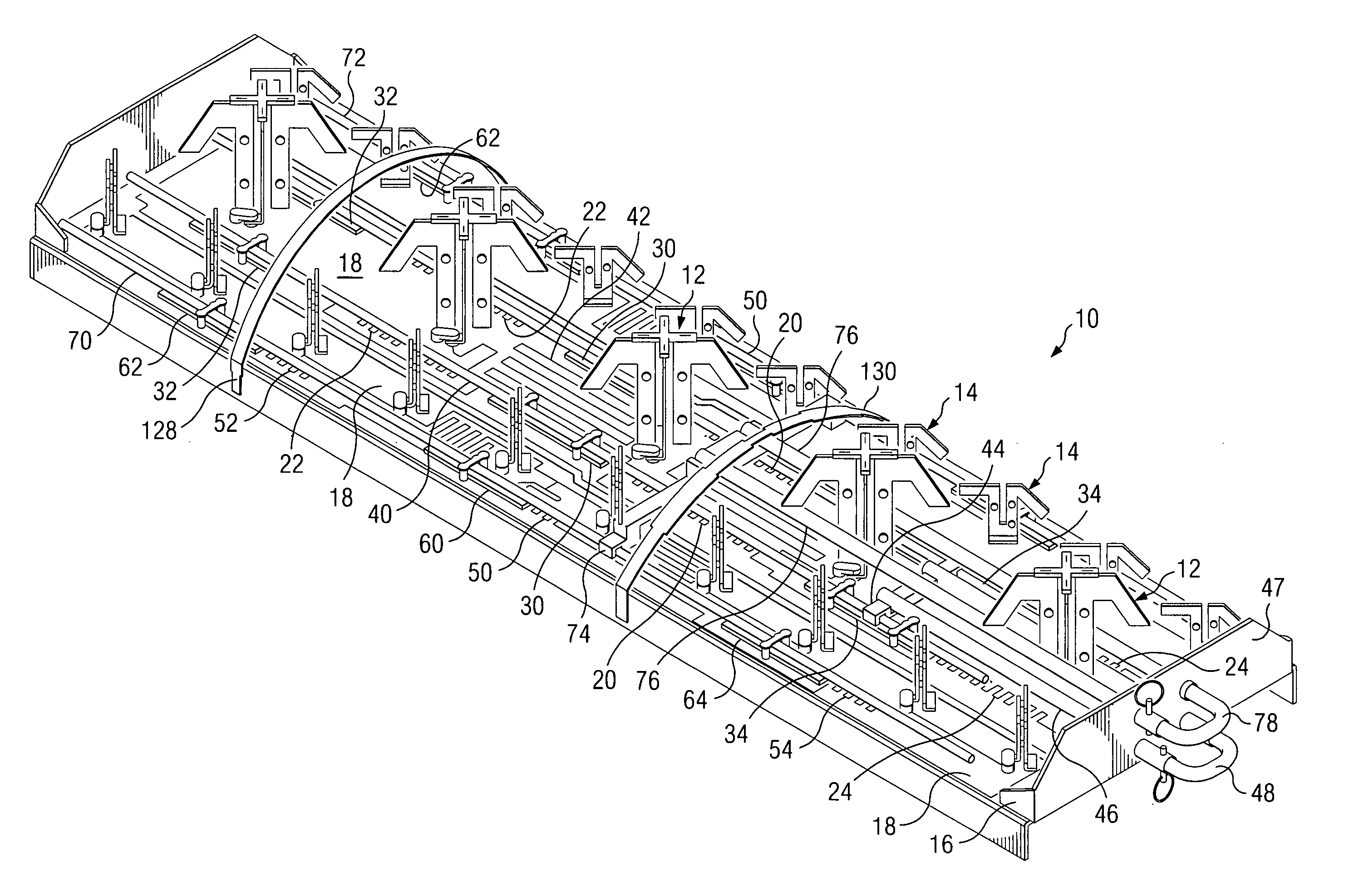Dual band, dual pole, 90 degree azimuth BW, variable downtilt antenna
a dual-pole, variable technology, applied in the field of antennas, can solve the problem that the optimal value of downtilt is not always predictable, and achieve the effect of uniform phase shift and downtilt adjustmen
- Summary
- Abstract
- Description
- Claims
- Application Information
AI Technical Summary
Benefits of technology
Problems solved by technology
Method used
Image
Examples
Embodiment Construction
[0028]Referring now to FIG. 1, there is generally shown at 10 a dual band, dual pole, 90 degree horizontal azimuth beamwidth, variable downtilt antenna according to the preferred embodiment of the present invention. Antenna 10 is seen to include a first linear array of dipole elements 12 forming a cellular band antenna, and two linear arrays of antenna elements 14, one linear array arranged each side of the first linear array 12 and together forming dipole elements forming a PCS band antenna. For purposes of clarity, the antenna elements 14 along the nearside of the antenna have been omitted in this FIG. 1 to depict the various features of the antenna 10, including the microstrip feed system feeding each of the respective antenna arrays and formed upon respective PC boards having a backplane thereunder.
[0029]Advantageously, a first microstrip feed network has a pair of first serpentine portions 20 feeding the center dipole element 12. Each first serpentine portion 20 feeds a pair of...
PUM
 Login to View More
Login to View More Abstract
Description
Claims
Application Information
 Login to View More
Login to View More - R&D
- Intellectual Property
- Life Sciences
- Materials
- Tech Scout
- Unparalleled Data Quality
- Higher Quality Content
- 60% Fewer Hallucinations
Browse by: Latest US Patents, China's latest patents, Technical Efficacy Thesaurus, Application Domain, Technology Topic, Popular Technical Reports.
© 2025 PatSnap. All rights reserved.Legal|Privacy policy|Modern Slavery Act Transparency Statement|Sitemap|About US| Contact US: help@patsnap.com



